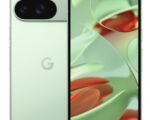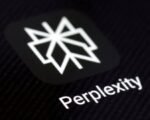Google’s big moment at I/O 2025 wasn’t a flashy gadget or yet another chatbot tweak. Instead, it hit us with a hefty $249.99 monthly price tag for its new AI Ultra subscription—offering early access to its top-tier Gemini AI models and a slew of automation perks. Meanwhile, Google also threw down the gauntlet to Meta and Apple in the extended reality space, unveiling its Android XR platform and new AI-powered wearables.
Google’s AI Ultra Subscription: Pricey, But Packed
So here’s the scoop: Google’s AI Ultra plan costs nearly $250 a month. Yeah, it sounds steep, but it’s right up there with other big players. OpenAI’s Pro plan and Anthropic’s Claude Max tier both hover around the $200 mark. What’s Google doing differently? Bundling.
You get access to the best Gemini AI model, experimental tools, a whopping 30TB of cloud storage, and YouTube Premium included. That’s quite a package for developers and power users who want the latest and greatest without waiting. Google’s clearly positioning Gemini not just as a behind-the-scenes helper for search or Workspace but as a standalone powerhouse people can actually pay for.
This shift suggests Google is doubling down on monetizing AI beyond the traditional ad and search revenue streams that have fueled it for years.
Android XR: Google’s Answer to Meta and Apple’s AR Ambitions
Google wasn’t just about AI software this year. Its announcement of Android XR grabbed attention. XR covers a wide range of tech—augmented reality (AR), virtual reality (VR), and mixed reality (MR)—all designed to mix digital content with the real world.
Samsung’s upcoming Project Moohan headset, running Android XR, will hit the market later this year. Think of it as a competitor to Apple’s high-end Vision Pro, but with deep Gemini AI integration for navigation, guidance, and live assistance.

Then there are the stylish smart glasses from Google partners like Gentle Monster, Xreal, and Warby Parker. These aren’t your clunky, awkward Google Glass throwbacks. They come loaded with mics, cameras, and displays—offering live translation, object recognition, and other AI-powered features, all wrapped in designs people might actually want to wear out in public.
-
Features include live language translation
-
Real-time object recognition
-
Visual overlays for enhanced environments
It’s a clear shot at Meta’s Ray-Ban smart glasses, which focus on hands-free image capture, audio playback, and AI integration. Meta’s more advanced AR headset, Orion, is still in the pipeline, but Google’s moves signal they want in on this consumer tech war now.
Imagen 4 and Project Astra: AI Creativity Meets Real-Time Understanding
On the AI creativity front, Google revealed Imagen 4, its latest text-to-image model. It’s capable of rendering detailed visuals—think realistic fabrics, water droplets, and fur. Plus, it nails text inside images better than ever, solving a problem that plagued earlier AI art tools. That makes it useful for everything from designing posters to making greeting cards that look sharp.
Then there’s Project Astra, which stole some spotlight. This prototype AI agent is wild. Point your phone at a messy desk, and Astra doesn’t just identify objects; it pulls info, remembers context, and chats with you in real time. Not your average assistant, it behaves like a persistent helper that understands the scene and keeps track of the conversation. Astra isn’t widely available yet, but expect parts of its tech to roll out later this year in Gemini apps and Android.
Google Search AI Mode: Reimagining How We Find Answers
Google also flipped the switch on AI Mode in Search, now live in the U.S. Instead of the usual blue link list, users see AI-generated summaries with explanations and citations. Google hopes this will keep people from switching to chatbots like ChatGPT or Perplexity for quick answers.
However, this change puts Google’s ad business on thin ice. Ads are a huge revenue chunk, and fewer links mean fewer ad clicks. To balance things, Google is experimenting with ad placements inside AI-generated answers. It’s a tricky dance, but Google’s bet is that richer, interactive answers will drive more complex queries and keep advertisers interested.
Gemini 2.5 and Google Beam: Smarter AI and New Ways to Connect
Google’s DeepMind team also flexed Gemini 2.5 Pro, claiming it’s the smartest AI yet—beating OpenAI’s GPT-4 on coding and reasoning tests. It even has a “Deep Think” mode for step-by-step problem solving. Plus, a lighter Gemini version runs 22% faster, ideal for mobile and edge devices.
In collaboration with HP, Google previewed Beam, a 3D video chat system that uses AI and depth sensors to recreate face-to-face conversations virtually. This is aimed at businesses but shows Google’s ongoing interest in making digital communication feel more personal and immersive.
| Feature | Details | Notes |
|---|---|---|
| AI Ultra Subscription | $249.99/month, includes Gemini AI, 30TB cloud, YouTube Premium | Targeted at power users and devs |
| Android XR Devices | Samsung Project Moohan headset + smart glasses from partners | Competing with Meta & Apple |
| Imagen 4 | Advanced text-to-image generation | Improved detail & text accuracy |
| Project Astra | Real-time AI assistant with visual & audio memory | Prototype, partial rollout soon |
| Google Search AI Mode | AI-generated summaries replace blue links | Balances ads with interactive answers |
| Gemini 2.5 Pro | AI model with advanced reasoning and coding skills | Outperforms GPT-4 in tests |
| Google Beam | 3D video chat system for enterprise | Enhances remote work experience |
Google I/O 2025 was a clear signal: AI is no longer just a feature—it’s becoming the core of Google’s product and business strategy. Whether developers, businesses, or everyday users will embrace this shift remains to be seen, but one thing’s for sure — Google isn’t holding back.








